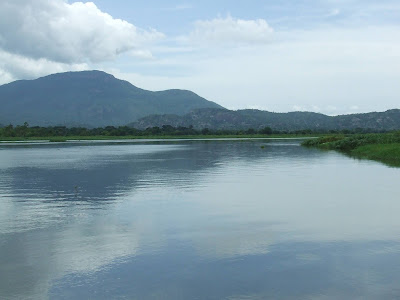My novel ‘The Coincidence Authority’ features, in its closing chapters, a tough, overland trip by the eponymous protagonist, Thomas Post. He travels by bus, taxi, bicycle, and foot, all the way from Kampala to the north west corner of Uganda –a province known as West Nile. This corner of Uganda has been snipped off the country map by the Nile River, and is only accessible by a bridge to the far west of the country at Pakwach, or by a smelly, unreliable (but more accessible) ferry eighty miles away at Laropi (unless you sneak over the border from Sudan or Congo). This was a journey I first made around 1970 with my brother-in-law Doop when I was fifteen or sixteen or thereabouts. Doop was an engineer installing elevators into Ugandan hospitals. I went with him as his spanner boy to places like Gulu, and Moyo – remote communities, close to the borders with Congo and Sudan. The region has been a war zone for much of the past half century, although now, thankfully, it is at peace. Thomas Post, in the novel, crosses the river at Laropi, and I felt it was important to go back and see the region again; so in May 2011 in an effort to do the research, my son Jon and I followed in Thomas’s footsteps. We drove north from Kampala, and boarded the ferry to West Nile. The river is only about half a mile wide here. This is one of its narrowest points. It was a languid, surreal crossing, watched by hippos. Glorious.
Please check out my website to learn more about my books: https://www.johnironmonger.com
what3words /// The simplest way to talk about location
What3Words:
pivot.stepbrother.atrocious




































.jpg)